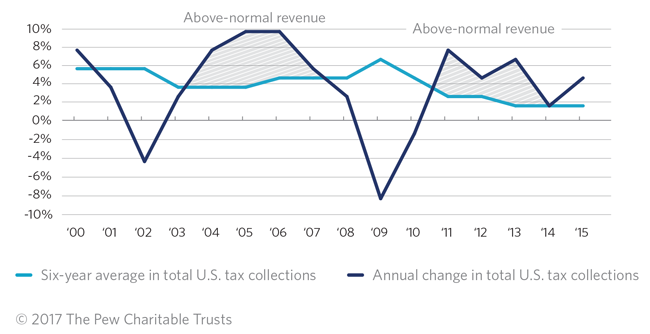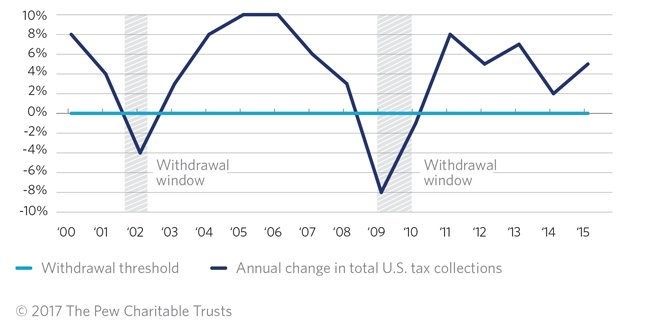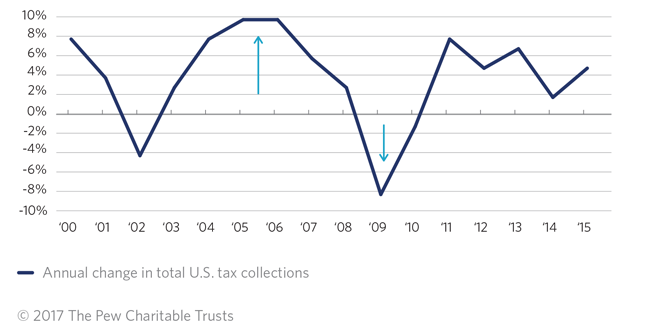Rainy Day Fund Best Practices
Guidelines for making deposits, withdrawing reserves, and setting savings targets
Editor’s note: This fact sheet was updated in October 2019 to reflect an increase in the number of states with budget stabilization funds.
Overview
Forty-eight states have a budget stabilization fund, commonly known as a rainy day fund, to set aside money in good times so that it's available in bad times. Despite the widespread use of these funds, the policies that guide deposits, withdrawals, and a fund's size vary greatly. Since 2014, Pew has released three reports—"Building State Rainy Day Funds" (2014), "Why States Save" (2015), and "When to Use State Rainy Day Funds" (2017)—that provide evidence-based best practices for those policies.
Deposit rules
States should set aside a percentage of their annual revenue when growth exceeds its typical rate. For example, Virginia saves half of all revenue above its average six-year growth rate, a practice that Moody's praised as "a strong feature of its Aaa rating" that "will help to prepare it for future downturns."

Step 1: Identify above-normal revenue growth level.
Step 2: Save a portion of that additional revenue.
Withdrawal rules
Establish clear, measurable, and objective conditions for when money can be drawn from the fund. Lawmakers should be able to tap it when revenue or a specified economic indicator (e.g., state personal income) drops below a predetermined level.

Step 1: Determine conditions for when the budget stabilization fund can be accessed.
Step 2: When those conditions are met, lawmakers have the option of using the fund.
Optimal size
The maximum size of a rainy day fund should be evidence-based. It should be large enough to offset a major recession but not so large that money is set aside that could be better used for tax cuts or programs. As a best practice, states should examine their historical revenue fluctuations. States with a history of larger fluctuations should save more than states with relatively stable tax streams.








